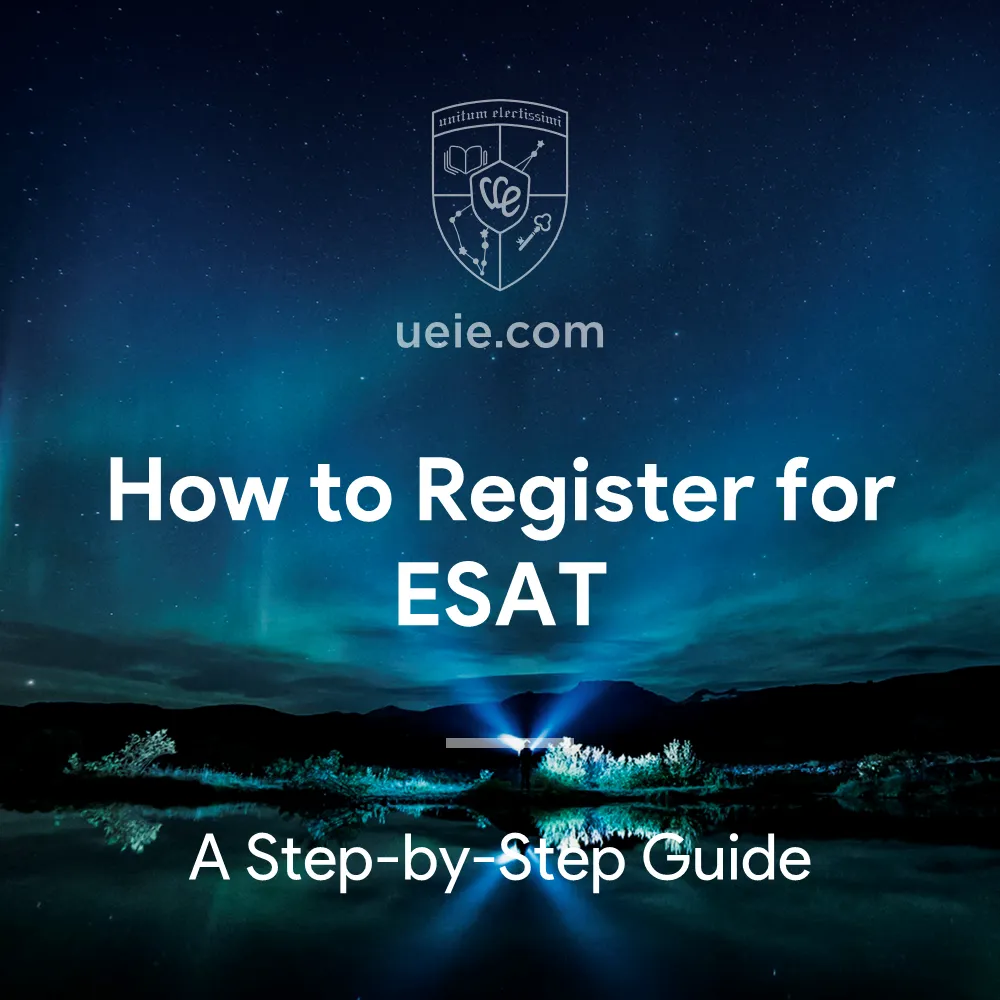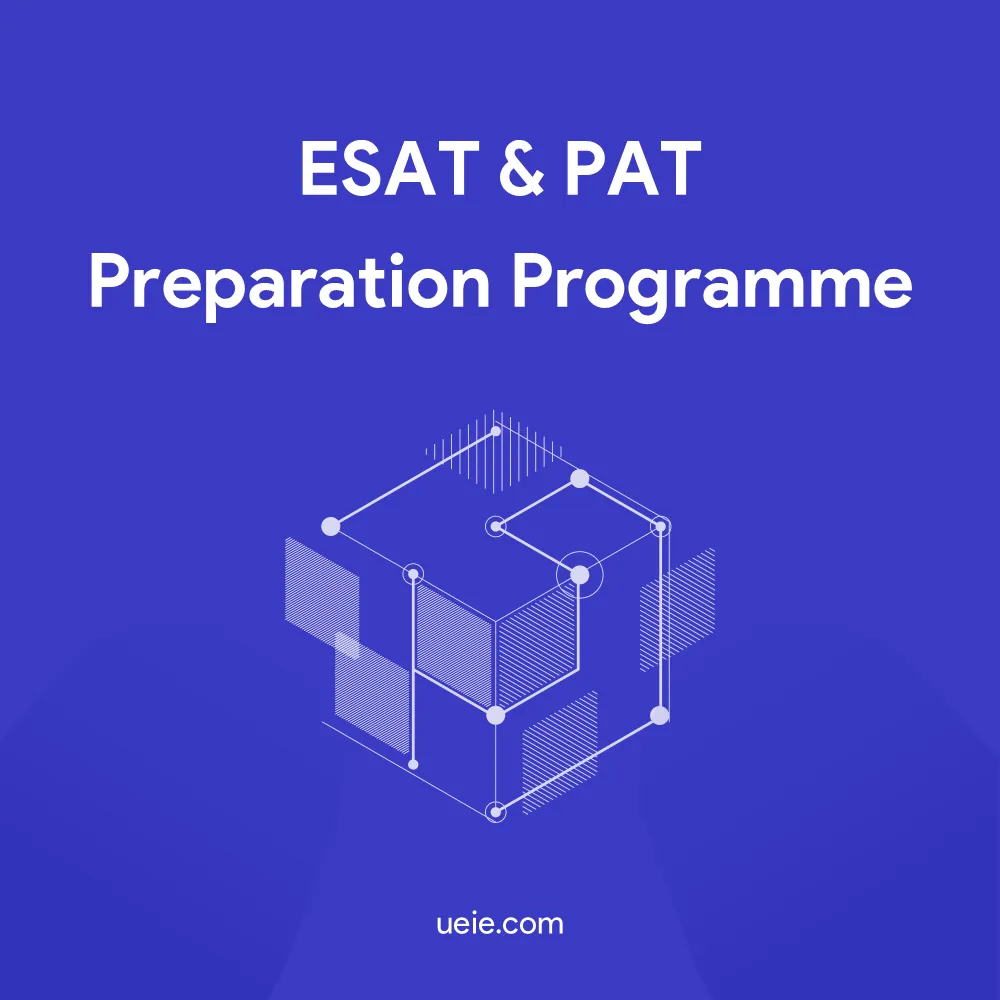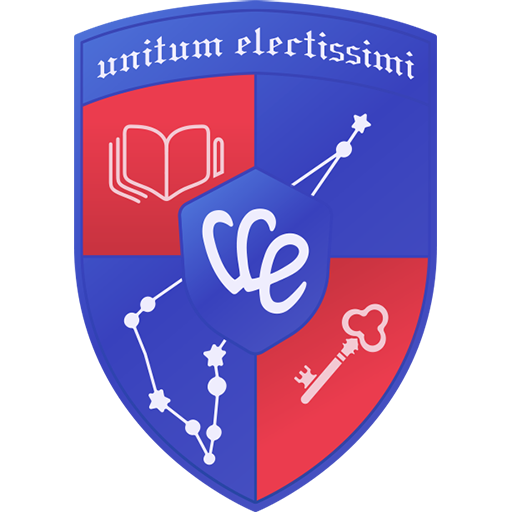ESAT Explained: Navigating the Modular Test for Science & Engineering

Independent Teacher
ESAT Explained: Navigating the Modular Test for Science & Engineering

The Engineering and Science Admissions Test (ESAT) is a pivotal assessment utilized by prominent universities, including the University of Cambridge, Imperial College London, and University College London (UCL). Its purpose is to evaluate the academic potential of undergraduate candidates applying for courses in engineering, natural sciences, and related disciplines. This document offers a systematic and comprehensive overview of the ESAT test, designed to help you thoroughly understand the latest requirements and essential information regarding the test. It covers critical aspects such as the test’s format, content, scoring system, and specific prerequisites. Once you have familiarised yourself with the details of the ESAT, it is highly recommended that you consult the ESAT Preparation Guide and ESAT Registration Guide, which I have authored, for more detailed instructions for registration and guidance on preparation strategies.
I. What is the ESAT Test?
ESAT stands for the Engineering and Science Admissions Test. It is a computer-based admissions test managed and operated by UAT-UK (University Admissions Tests – UK), a non-profit organisation jointly established by the University of Cambridge and Imperial College London.
The ESAT test aims to thoroughly assess the academic potential of students applying for specific undergraduate courses at universities like Cambridge and Imperial College, focusing on their ability to apply scientific and mathematical knowledge to solve complex problems.
The ESAT test is administered globally by Pearson VUE, a leading provider of assessment services.
II. ESAT Updates (2025/26 Admissions Cycle)
Since its initial implementation in 2024, the core format of ESAT—as a relatively new admissions assessment involving online computer-based testing, modular multiple-choice questions, and no calculators—remains consistent for the admissions cycle for entry in 2026.
The main updates pertain to operational aspects, such as specific test dates, registration windows, and associated fees for the 2025-2026 application cycle.
Regarding the ESAT itself, there is currently no information indicating significant changes to the test content, structure, or scoring criteria. Candidates are advised to regularly check the official UAT-UK website and the admissions pages of their target universities for the most authoritative and up-to-date official information.
III. Who Needs to Take the ESAT Test?
1. Universities and Courses Requiring ESAT
For students planning to apply for entry in 2026, the following universities require ESAT as part of the admissions assessment for specific undergraduate courses, departments, or faculties:
| University | Course / Department / Faculty |
|---|---|
| University of Cambridge | Chemical Engineering and Biotechnology |
| Engineering | |
| Natural Sciences | |
|
Veterinary Medicine |
|
| Imperial College London | Department of Aeronautics |
| Department of Chemical Engineering | |
| Department of Civil and Environmental Engineering | |
| Dyson School of Design Engineering | |
| Department of Electrical and Electronic Engineering | |
| Department of Mechanical Engineering | |
| Department of Physics | |
| University College London (UCL) |
Electronic and Electrical Engineering |
Important Reminder: University admission requirements may be subject to minor adjustments each year. All applicants must visit the official admissions websites for their target institutions and specific courses to obtain the latest and most authoritative information regarding entrance test requirements for the 2026 entry cycle (including whether the ESAT test is needed and the specific combination of subject modules required). Do not rely solely on third-party information.
2. ESAT Module Selection
ESAT consists of five modules (Mathematics 1, Mathematics 2, Physics, Chemistry, Biology). The requirements vary by university and course, typically requiring candidates to select three modules:
- Compulsory Module: Mathematics 1 is usually a compulsory module required by all courses.
- Optional Modules: Two additional modules are selected based on the specific course requirements.
3. Examples of ESAT Module Choices for Different Courses
University of Cambridge:
- Engineering: Requires Mathematics 1 + Mathematics 2 + Physics.
- Other specified courses: Mathematics 1 is compulsory; the other two modules can be chosen freely from the remaining options.
Imperial College London:
- Chemical Engineering: Requires Mathematics 1 + Mathematics 2 + Chemistry.
- Physics / Aeronautics / Civil / Electrical / Mechanical Engineering: Most require Mathematics 1 + Mathematics 2 + Physics.
- Design Engineering: Requires Mathematics 1 + Mathematics 2; the third module can be chosen freely.
- Other specified courses: Mathematics 1 is compulsory; the other two modules can be chosen freely.
UCL:
- Electronic and Electrical Engineering: Mathematics 1 is compulsory; the other two modules can be chosen freely.
4. Candidate Responsibility
When registering for the ESAT test (via the Pearson VUE platform), candidates are responsible for selecting and registering for the correct combination of subject modules based on the requirements of all the institutions and courses they are applying to. Selecting incorrect modules may invalidate an application.
IV. Key Dates for the ESAT Test
Below is a summary of the key dates for the two test sittings in Autumn 2025 and early 2026. (Please note that registration periods are indicative; specific start and end dates require close attention to official updates).
1. Autumn 2025 (Sitting 1) Schedule
| Key Stage | Date |
|---|---|
| Registration Period | 31 July 2025 to 29 September 2025 |
| Test Dates | 9-10 October 2025 |
| Results Released | 14 November 2025* |
Key Restrictions:
- Candidates applying to relevant courses at the University of Cambridge must take the test in this sitting.
- Candidates applying to the University of Cambridge from mainland China, Hong Kong, and Macao are not permitted to take the test on 9 October and must sit the test on 10 October.
2. Early 2026 (Sitting 2) Schedule
| Key Stage | Date |
|---|---|
| Registration Period | 27 October to 19 December 2025 |
| Test Dates | 6-7 January 2026 |
| Results Released | Approximately 6 weeks after the test* |
Key Restriction:
- This sitting is not available for candidates applying to the University of Cambridge.
* UAT-UK will notify candidates by email when their results are available to view in their UAT-UK account. Candidates will also receive a document explaining their results to provide further information on how to interpret their scores.
V. ESAT Format and Structure
The specific format and structural elements of the ESAT test are summarised in the table below:
| Feature | Details |
|---|---|
| Test Mode | Online, computer-based test |
| Test Location | Authorised Pearson VUE test centres worldwide |
| Subject Modules | 5 independent modules:
|
| Module Structure | Each module consists of 27 multiple-choice questions |
| Module Duration | 40 minutes per module |
| Timing | Each module is timed independently and taken sequentially. Unused time from one module does not carry over to the next. |
| Module Selection | Candidates must select the module combination required by their chosen universities and courses (typically 3 modules; see Section III). |
| Calculators | Not permitted |
| Dictionaries | Not permitted |
| Ancillary Tools | An erasable booklet and pen will be provided at the test centre for rough work. |
Key Points Interpreted:
- Pace Requirement: Completing 27 science or mathematics multiple-choice questions in 40 minutes equates to approximately 1.5 minutes per question. This demands a high level of subject knowledge proficiency, problem-solving speed, and rapid judgment.
- Independent Module Timing: Requires candidates to possess good time management skills to allocate time effectively within each module.
- No-Calculator Environment: Places significant demands on candidates’ mental arithmetic, written calculation, estimation skills, and the memorisation and fluent application of formulae and constants.
VI. ESAT Scoring Mechanism and Results Interpretation
Understanding how ESAT is scored and what the scores mean helps candidates to evaluate their performance more scientifically and comprehend its role in the application process.
1. Scoring Method
- Basic Rule: 1 mark is awarded for each correct answer.
- No Penalty: No marks are deducted for incorrect or unanswered questions; they simply score 0.
- Raw Score: Each module contains 27 multiple-choice questions, resulting in a maximum raw score of 27 per module.
2. Results Presentation
- Score Conversion: To ensure comparability across different test versions and sittings, the raw score for each module (0-27) is converted to a standardised score on a scale of 1.0 to 9.0, typically reported to one decimal place.
- Independent Reporting: The candidate’s final results report will list the standardised score achieved for each subject module taken. No total or average score is calculated.
- Accessing Results: Test results are usually released approximately 6 weeks after the test date. Candidates receive an email notification and can access their results via their UAT-UK account. Exam boards typically send results automatically to UCAS-listed universities requiring the score.
3. Results Interpretation and Use
- No Fixed ‘Cut-off’ Score: Neither UAT-UK nor the admitting universities set a uniform ‘interview cut-off’ or ‘offer threshold’ score.
- Differentiation Tool: The test is designed to effectively differentiate amongst academically strong applicants, providing an additional dimension of comparison, particularly within a pool of high-achieving candidates.
- Holistic Assessment Component: The ESAT score is an important reference point in the university admissions assessment process but is by no means the sole criterion. Admissions tutors consider it alongside the applicant’s academic background (e.g., A Level/IB predicted or final grades), personal statement, references, and potentially interview performance.
4. Score Competitiveness Analysis
Based on the official UAT-UK interpretation of ESAT results for 2024/25, combined with personal experience from tutoring students, here is an interpretation of representative scores:
- 4.5 represents the average standard: This suggests that most students score around 4.5. Observations indicate that many students achieving A* grades in relevant A Level subjects can reach this level without specific systematic preparation. Universities generally consider a 4.5 score roughly equivalent to A* grades in relevant A Level subjects.
- Around 7.0 places candidates in the top 10%: Experience from previous application cycles suggests that students achieving an average score of 7.0 or higher across their three modules generally receive interview invitations from Cambridge and have a high success rate for offers from Imperial College.
- Only about 5% of candidates score 8.0 or above: Unquestionably, candidates scoring in the 8.0−9.0 range are extremely competitive. While final admission to Cambridge also depends on a holistic review including the interview and other materials, the likelihood of receiving a direct offer from Imperial College is very high.
VII. ESAT Syllabus Overview and Difficulty Analysis
Accurately understanding the scope and difficulty characteristics of the ESAT is fundamental to formulating an effective preparation plan.
1. Syllabus Scope
- Knowledge Base: The ESAT syllabus is broad, primarily based on the core knowledge of UK A Level (or equivalent qualification) Mathematics, Physics, Chemistry, and Biology. It assumes candidates possess a solid foundation in the corresponding subjects at GCSE level (or equivalent).
- No Advanced Content: The syllabus does not include A Level Further Mathematics content or topics beyond the scope of standard A Level Physics, Chemistry, or Biology.
2. Core Content Overview by Module
The following outlines the main knowledge areas covered by each module (for a detailed list, always refer to the official syllabus):
Mathematics 1:
- Fundamental arithmetic and number concepts, units, ratios and proportions, algebra (including equations, inequalities, polynomials), coordinate geometry and plane geometry, basic statistics and probability. (Roughly corresponds to GCSE and some A Level Mathematics content).
Physics:
- Electricity (circuits, fields), basic magnetism, kinematics, Newton’s laws, energy and momentum, circular motion, moments, basic thermal physics, properties of matter, waves (including basic optics), atomic physics and radioactivity. (Roughly corresponds to core AS and some A2 Physics content).
Chemistry:
- Atomic structure and periodicity, stoichiometry and equations, redox, bonding and structure, states of matter and particle theory, main group chemistry, separation techniques, acids, bases and salts, reaction kinetics, introductory chemical thermodynamics, introductory electrochemistry, core organic chemistry, metals and their reactions, air and water, introductory chemical analysis. (Roughly corresponds to core AS and some A2 Chemistry content).
Biology:
- Cell structure and function, biological molecules, enzymes, cell transport, cell division and genetics, DNA and gene technology, variation and evolution, animal physiology (respiration, circulation, digestion, nerves, endocrine system, etc.), plant physiology, ecosystems. (Roughly corresponds to core AS and some A2 Biology content).
Mathematics 2:
- Advanced algebra and functions (including polynomials, modulus function, mappings), sequences and series, coordinate geometry (including parametric equations, introduction to conic sections), trigonometry (including sum/difference formulae, double angle formulae, trigonometric equations/inequalities), exponential and logarithmic functions, calculus (differentiation, integration for area/volume), using calculus to analyse graphs. (Roughly corresponds to AS Mathematics and some A2 Pure Mathematics content).
3. Difficulty Characteristics Analysis
- Challenging by Design: Officials explicitly state that ESAT is designed to effectively differentiate top-tier applicants, and the questions are intended to be challenging.
- Breadth and Depth of Knowledge: The test covers a wide range, requiring a deep understanding and fluent mastery of core A Level knowledge, not just superficial memorisation. The multiple-choice format particularly tests the precision of conceptual understanding.
- Extreme Time Pressure: The average time of 1.5 minutes per question presents a significant challenge to knowledge retrieval speed, problem-solving efficiency, and rapid decision-making abilities.
- No-Calculator Environment: Places strict demands on the accuracy and speed of mathematical operations (mental arithmetic, written calculation, estimation), unit conversions, and the recall and application of formulae.
- Integrated Application Skills: Questions may integrate multiple concepts, requiring strong analytical and application skills from candidates.
- Overall Difficulty: Considered no less demanding than the NSAA/ENGAA tests it replaces, with high requirements for logical reasoning, mathematical application, and scientific literacy.
VIII. How to Register for the ESAT Test?
1. Main Process Overview
Pearson VUE primarily handles ESAT test registration. As UAT-UK’s official partner, their online platform manages bookings.
- Create a UAT-UK Account: After the registration period begins (expected from early June 2025), you will need to visit the Pearson VUE official website and follow the instructions to create a UAT-UK personal account. Please ensure that you use personal information consistent with your UCAS application and identification documents for registration.
- Book the Test and Select Modules: Once your account is successfully created and you have logged in, during the exam booking window (expected from early August 2025), you can book the ESAT test within the Pearson VUE system. The crucial step is to select the correct combination of subject modules based on the university program requirements as described in Part Three and verified by you. Simultaneously, you need to choose a suitable exam date, time, and test center.
- Pay the Test Fee: Follow the system prompts to complete the online payment of the exam fee.
- Confirm Registration Information: Before submission, carefully review all registration information, including personal details, exam subjects, time, and location. You will usually receive a confirmation email after successful registration.
2. Obtain Detailed Registration Guidance
For specific account registration steps, detailed information required, methods for querying and selecting test centers, payment methods, the process and deadlines for applying for special exam arrangements (if needed), and important notes during the registration process, you can log in to the Pearson VUE official website or refer to our specially compiled ESAT Registration Guide for complete and detailed step-by-step operational guidance.

How to Register for ESAT
IX. Core Preparation Strategies and Resource Recommendations
1. Core Preparation Strategies
To successfully meet the challenge of ESAT, preparation needs to focus on the following core areas:
- Knowledge Level: Deeply understand and master the A Level (or equivalent) mathematics and science knowledge required by the official syllabus.
- Skill Level: For the online multiple-choice format, focus on training for extremely high problem-solving speed and accuracy, proficient multiple-choice test-taking skills, and complete adaptation to a calculator-free calculation environment.
- Practical Level: Through extensive practice and simulation, transform knowledge and skills into stable performance under time pressure, and familiarize yourself with the operation of the online examination platform.
The above are only the core directions for ESAT preparation. For detailed strategies and steps on how to systematically plan your preparation, implement learning in stages, use specific training methods (such as error analysis, time management skills), and improve specific abilities, please be sure to read my specially written: ESAT Preparation Guide

Conquer the ESAT: Multi-Subject Strategies for Online Test Success
2. Official Core Resources
You can obtain the most authoritative information through the core channels on the UAT-UK official website, including:
- The latest version of the ESAT test syllabus
- Official sample questions and practice materials
- Exam guidance and frequently asked questions
- Past papers for ENGAA and NSAA (2016-2023)
3. UEIE ESAT Courses and Materials
To help candidates prepare systematically and efficiently, I, Teacher Xie Tao, led an experienced teaching team. Together, we developed the ‘UEIE ESAT Self-Study Package’, which includes:
- ESAT Video Lecture Series: In-depth explanations of core test points and problem-solving methods (covering Mathematics 1, Mathematics 2, and Physics modules).
- ESAT Practice Question Bank: Provides a vast number of online practice questions, graded by topic and difficulty, for intensive training (covering Mathematics 1, Mathematics 2, and Physics modules).
- ESAT Full-Length Mock Exams: Multiple sets of high-quality original online mock test papers, covering all five subject modules.
We annually revise and update these materials. This ensures they match the latest exam trends and requirements.

ESAT & PAT On-Demand Prep Suite
US$609 – US$2 416Price range: US$609 through US$2 416
In addition, we also cooperate with several international schools to offer ESAT preparation classes. Interested students and parents can learn more about related courses and materials through the following link.

ESAT & PAT Preparation Programme
US$3 102 – US$12 777Price range: US$3 102 through US$12 777
4. Other Supplementary Resources
- High-Quality Online Question Banks: Platforms like Isaac Physics offer a large number of practice questions related to A Level Physics and Mathematics that help develop thinking skills.
- Relevant Subject Textbooks and Workbooks: Quality textbooks and workbooks for A Level subjects help consolidate foundational knowledge.
- Past Papers from Related Exams: Some questions from the discontinued NSAA/ENGAA exams, after careful comparison with the syllabus and question types, can be selectively used to practice specific knowledge points or ways of thinking.
5. Resource Usage Suggestions
- Prioritize Official Materials: Focus on the UAT-UK official syllabus and sample/past papers.
- Targeted Approach: Selectively use supplementary resources based on your preparation stage and areas of weakness.
- Choose Quality over Quantity: Resources should be high-quality rather than numerous to avoid information overload.
- Active Learning: Actively think, deeply review, and summarize when using any resource.
X. Next Steps Recommended
After reviewing this ESAT Comprehensive Guide, you should now possess a clear and thorough understanding of this significant admissions assessment. To transform this knowledge into effective application preparation, I recommend the following actions:
1. Verify Official Requirements
Promptly visit the official admissions websites for all your target universities and programs. Reconfirm their latest and most accurate entrance requirements for 2026 matriculation, paying particular attention to whether ESAT is mandatory and the specific combination of subject modules required. This information is foundational to all subsequent planning.
2. Plan Your ESAT Test Registration
Carefully read the ESAT Registration Guide to gain a complete understanding of the procedural details, including account creation, information submission, test center selection, fee payment, and applications for special accommodations.
3. Develop a Preparation Strategy
Thoroughly study the ESAT Preparation Guide. Tailor a detailed, actionable, and phased study plan to your individual circumstances, and begin your preparations as early as possible.
4. Select High-Quality Study Materials
In line with your preparation strategy, selectively utilize high-quality supplementary resources. For example, leverage the preparatory courses and materials available on the UEIE ESAT Preparation Hub for systematic study and targeted practice.

ESAT Prep Hub
Finally, I wish you the very best in your ESAT preparation and hope you achieve your desired outcomes in your university applications!
Follow Us on Wechat



